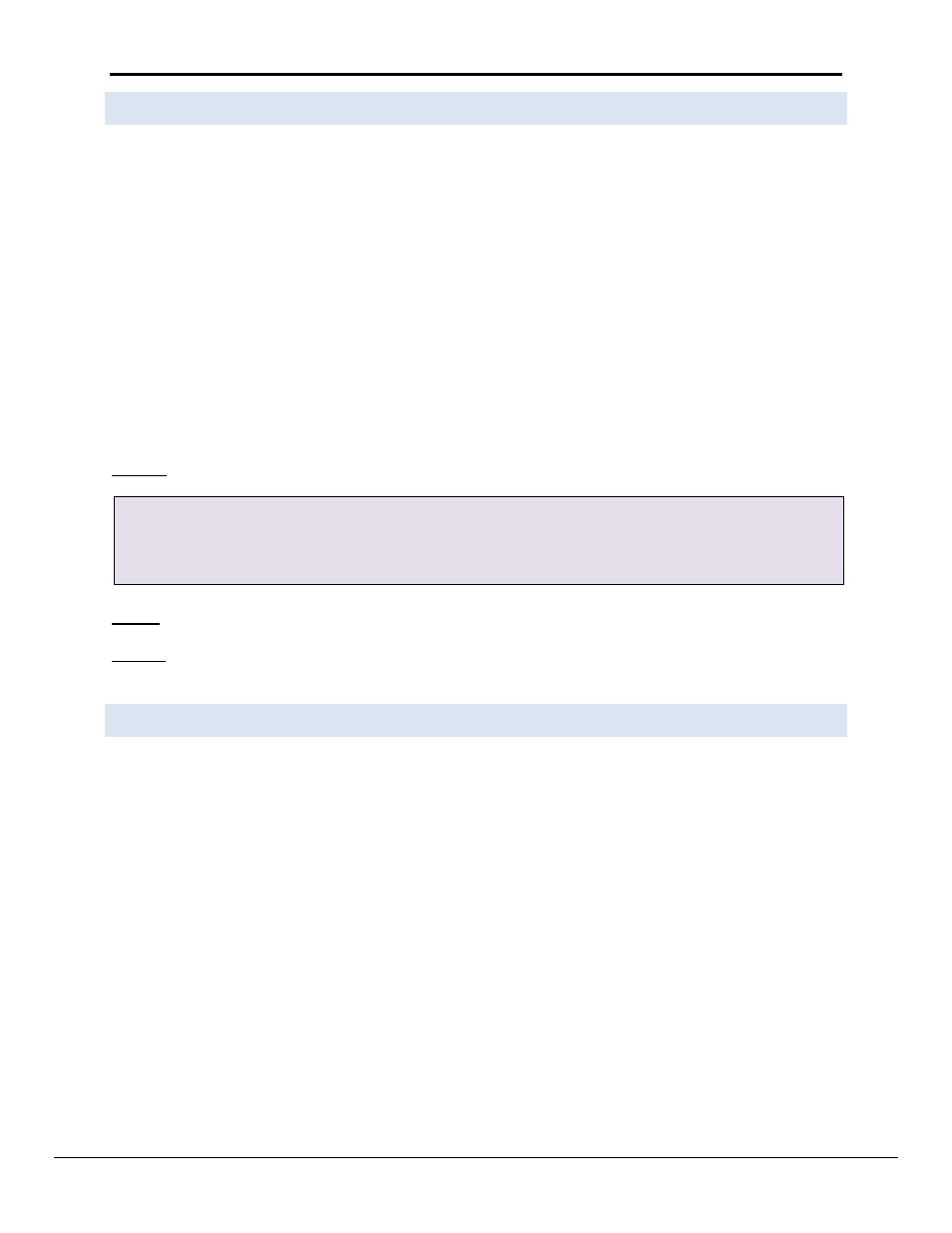Line drive parameters, Suppressing squelch on half duplex communications – ProSoft Technology PS-QS-1x10-0781 User Manual
Page 57

FieldServer Configuration Manual
Page 57 of 90
FieldServer Technologies 1991 Tarob Court Milpitas, California 95035 USA Web: www.fieldserver.com
Tel: (408) 262-2299 Fax: (408) 262-2269 Toll Free: (888) 509-1970 email: [email protected]
9.1
Line Drive Parameters
The RS-485 communications connection requires that line drive is asserted before sending a message. When the
message is sent, the line drive must be turned off to allow other devices on the network to assert their line drives.
Because the assertion and de-assertion of the line drive is not instantaneous, some time needs to be allowed
between asserting the line drive and sending the message, as well as between the end of the message and de-
asserting the line drive. This time is specified by the Line_Drive_On and Line Drive_Off parameters.
If R1 or R2 are declared as ports in the configuration file, then Line_Drive_On and Line_Drive_Off are set to 1ms by
default, and need not be declared in the connection parameters unless the application requires that the line drive
times are adjusted.
If Line Drive times are set incorrectly, truncated messages and noise occur. If the time set is too long it could
truncate a message from another device. If the time set is too short, the FieldServer’s message will be truncated.
For P1-P8 (RS-232), the Line_Drive parameters default to 0. Line Drive is implemented on FieldServers using the
RTS (Request to send) line on the RS-232 connection.
Example
// Client Side Connections
Connections
Port , Baud , Parity , Data_Bits , Stop_Bits , Protocol
, Poll_Delay , Line_drive_on , Line_drive_off
P8
, 9600 , None , 8
, 1
, Modbus_RTU , 0.100s
, 0.001s
, 0.001s
Note 1: Line_Drive_On and Line_Drive_Off are not supported in the FS-X30 Series.
Note 2: Handshaking is not supported. The RTS line can be enabled by specifying Line_Drive_On and
Line_Drive_Off as non-zero values.
9.2
Suppressing Squelch on Half Duplex Communication s
Many half-duplex serial communication channels generate noise when the channel switches direction (typically at
the end of a transmission burst), causing spurious data to be received at either end. The FieldServer kernel
implements a user-configurable timing sequence designed to suppress the reception of this spurious data.
When the transmission ceases and releases the channel, noise can be generated at both the transmitting and
receiving end. In a master-slave situation using poll and response messages this leads to four possible instances of
squelch generation:
Squelch received by the master at the end of a master to slave poll transmission.
Squelch received by the slave at the end of a slave to master response transmission.
Squelch received by the slave at the end of a master to slave poll transmission.
Squelch received by the master at the end of a slave to master response transmission.
The first two are examples of what is termed TX squelch, received by the transmitting port at the end of a
message, the last two are examples of RX squelch, received by the receiving port at the end of a message.
The timing diagram illustrates the four instances of squelch, and identifies time intervals controlled by two
connection parameters, i.e. Squelch_Timer_Tx and Squelch_Timer_Rx. These timers are activated at the
